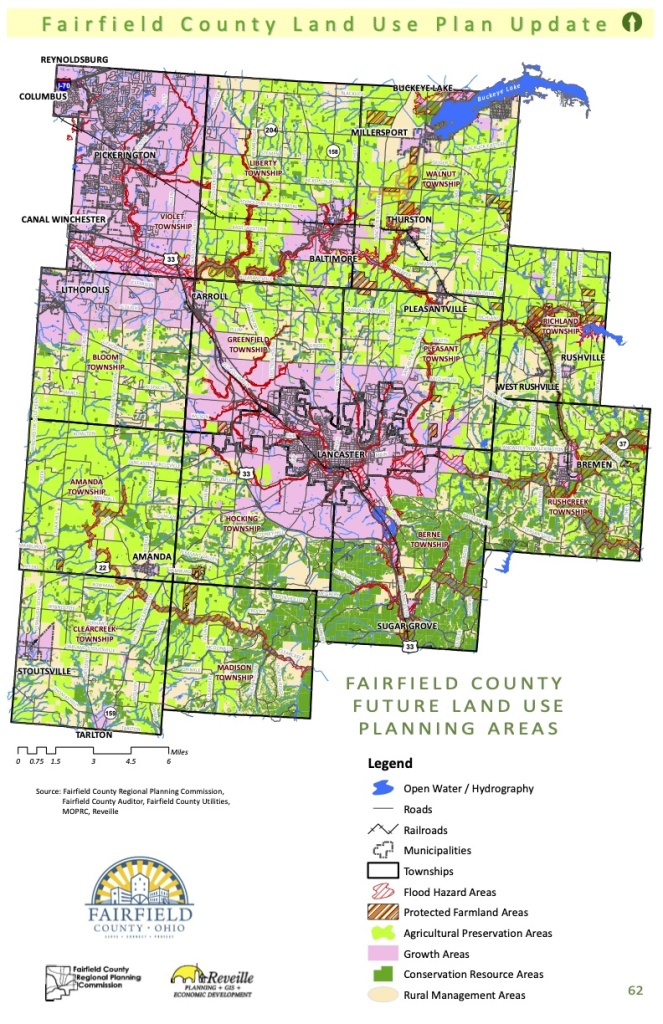By Anthony Buckley
I grew up on an 83-acre cattle farm and went to a public high school surrounded by cornfields. Rural southeastern Ohio is the place I call home. Many might ask where urban planning comes into play in an area that had 700 people in its village center. Ohio countryside is by no means comparable to the streets of New York City or even the neighborhoods of Chapel Hill or Durham. Where the country and the city do become akin is in their need for smart planning.
The World Cities Report 2022, a piece produced by the United Nations, projects that 58 percent of the global population will live in cities in the next 50 years. At the same time, a meta-analysis in Nature Food forecasts a 35 to 56 percent increase in global food demand by 2050. In other words, cities are set to expand at unprecedented rates while the need for rural areas to provide food and other necessities becomes ever more critical. These two realities, predictions or not, contradict one another without smart urban planning orchestrating their unification.
This bold proposition, though, is hardly one I have lived. In Fairfield County, the place I come from, county commissioners recently drafted a document called the Fairfield County 2023 Comprehensive Plan. This 100 or so page proposal outlines the future development goals for the area, both urban and rural. As a county immediately adjacent to Columbus, Ohio, Fairfield will experience significant growth over the coming decades and commissioners are moving to ensure they are ready. However, their aspirations, as noble as they are, have failed to meet the needs of a 21st century county.

The Future Land Use plan outlines the zoning of each parcel of land within the borders of Fairfield County. To the credit of the commissioners, plans are in the works to create mixed-use zones and high-density housing. These initiatives reflect an understanding of the finite resource present in Fairfield County. However, my frustration, a sentiment I share with many other residents especially farmers, lies with the commissioners plans for rural areas.
The working draft states in its outlook that, “From a development standpoint, primary agricultural areas where working farms are concentrated should be conserved through a variety of measures.” It then goes on to propose policies such as directing growth away from priority preservation areas and restricting new homesites to very large parcels. I applaud the premise of these policies as I believe them to be thoughtful and deliberate as rural land makes up 75% of the available area in the region. Yet, the map included with the draft proposal contradicts these ideas.
The discrepancy’s present themselves almost immediately. In the Comprehensive Plan, commissioners aspire to construct “live/work” units along commercial corridors and create open spaces that maintain a “sense of rural character.” Despite that, the map from both 2018 and 2023 demonstrate no commitment to build out these promises. The central artery connecting central Fairfield County to Columbus is Route 33. The growth planned for this critical corridor is entirely inadequate. Instead, commissioners and developers have proposed rapid expansion out from the center of Lancaster and Pickerington into the surrounding countryside. Not only does this plan pave the way for unsustainable urban sprawl, it also presents a direct threat to the rural way of life. Furthermore, it opposes the very notion that farmland will be critical for feeding an expanding population, an idea firmly established by leading researchers and organizations.
The misguided plans have a very natural origin though: there is a disconnect between smart urban planning and rural conservation. Rural people understand and view the land they live on differently from those in the city and the suburbs. In the country, the land is more than just a way to make a living; the land is as coupled to our identity and heritage as our photo albums and homes. In the city, land is a commodity; in the country, it’s a keeper of culture. Ensuring land stays in the hands of rural people means our history is preserved, able to be passed down to the next generation. The 2023 Fairfield County Comprehensive Plan threatens to take away what gives country residents identity, a serious urban planning misstep.
In response to the commissioner’s proposal, I want to make a proposal myself. Urban planners have often conducted their work to provide for those living within a city’s limits. I opine that viewing urban planning through a more rustic lens is equally important. My county commissioners and their ill-advised plan exemplify the need for such a change. I propose those responsible for training the next generation of planners begin to ingrain a regard for rural spaces in their students. Rather than viewing the countryside as the foundation upon which to build yet unrealized apartment buildings, view the land as a living testament to the history of rural people. Teach undergraduates, master’s students, and government leaders to understand and appreciate the land the same way rural people do.
As the world moves forward, land will continue to become a premium. Cities will need to expand, but urban planners must find a way to balance the needs of the cities with the needs of the country. Both places are equally important, and both deserve to have a say in the future that we want to build.
Citations
Commission, F. C. R. P. (2018). Fairfield County Future Land Use Planning Areas. Fairfield County Comprehensive Land Use Plan. Retrieved 2023, from https://www.co.fairfield.oh.us/rpc/pdf/Fairfield-County-Future-Land-Use-Plan-2021.pdf.

Anthony is an undergraduate student in the Department of Environment, Ecology, and Energy at UNC Chapel Hill. He is interested in clean energy as a tool for economic development, the public policy of energy and sustainability, and rural empowerment in the renewable energy transition. Outside of the classroom, you can find Anthony at Carolina sporting events year-round or grabbing dinner with his roommates on Franklin.
Featured image courtesy of Anthony Buckley

